The shortest answer is to automate documentation to save time, lower risks, and quickly analyze data to make better decisions.

Most process plants have some sort of system in place for managing instrument calibration operations and data. However, just like airport security, the systems and processes can be very different even within the same company across different plants. Methods often differ greatly in terms of cost, quality, efficiency, and accuracy of data and the level of automation.
If you are manually writing results on paper or even manually entering data electronically, you’re spending about half your time on paperwork. Using a documenting calibrator to automatically transfer test data to calibration software designed for the task can decrease the amount of time spent on calibration in many cases by up to 75%.
If you’re thinking about leaving the paper documentation lifestyle, using calibration software should be the ultimate goal. On your way there, you could store results in a spreadsheet or generic database. That will get you paperless, but it won’t realize all the benefits. The risk of human error and compromised data integrity will still be high and data entry will be time consuming. It won’t automate updating calibration due dates like software designed for the job. Here’s a secret you may not know—many people still write down calibrations on paper. They think that they are the only ones and are usually embarrassed at the thought and hesitant to reach out for help. If this is you, know you are not alone. Start by reading this blog post and asking for help!
Paper-based systems
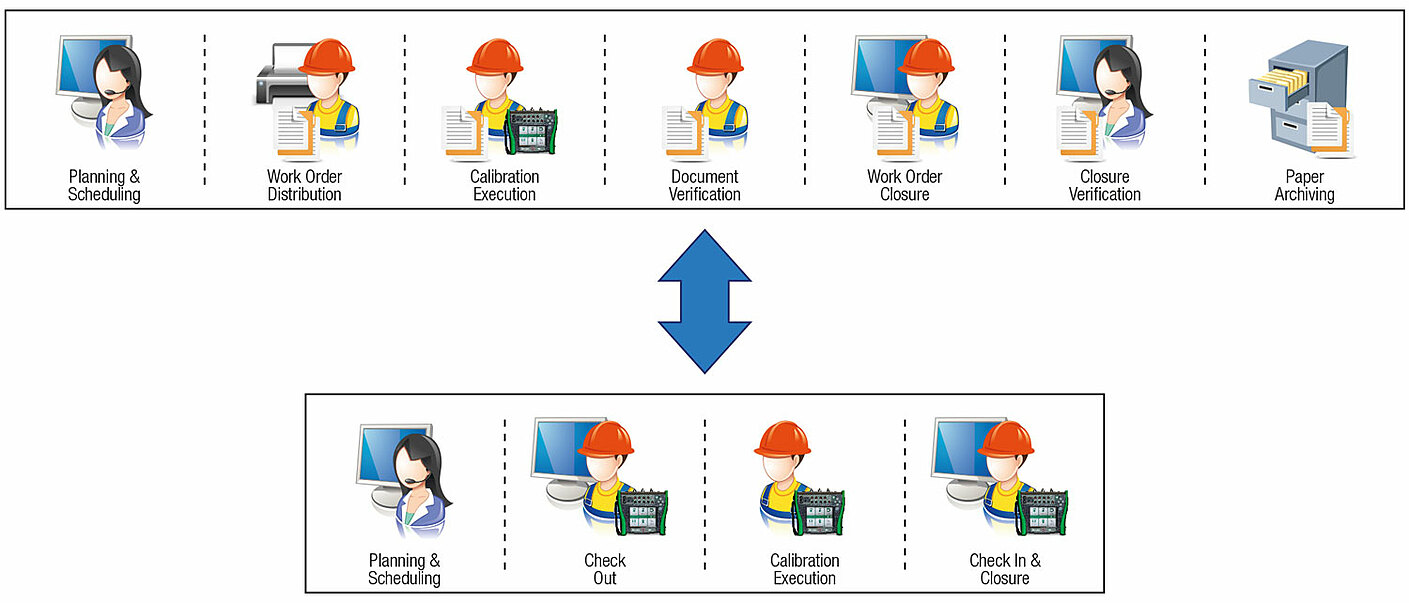
Traditionally, engineers and technicians used pen and paper to record calibration results while out in the field. On returning to the shop, notes are tidied up or transferred to another paper document, after which they are archived as paper documents. Inherent in managing hundreds or even thousands of pieces of paper is the eventual misplaced, lost or damaged document.
While using a manual, paper-based system requires little or no investment, it is very labor-intensive and means that historical trend analysis becomes very difficult to carry out.
In addition, the calibration data is not easily accessible. The system is time consuming, soaks up a lot of resources and typing errors are commonplace. Dual effort and re-keying of calibration data are also significant costs here.
In-house legacy systems (spreadsheets, databases, etc.)
Although certainly a step in the right direction, using an in-house legacy system to manage calibrations has its drawbacks. In these systems, calibration data is typically entered manually into a spreadsheet or database. The data is stored in electronic format, but the recording of calibration information is still time-consuming and typing errors are common. Also, the calibration process itself cannot be automated. For example, automatic alarms cannot be set up on instruments that are due for calibration.
Calibration module of a maintenance management software
Some use the calibration module of their maintenance management software for calibration management. Plant hierarchy and work orders can be stored in the it, but the calibration cannot be automated because the system is not able to communicate with ‘smart’ calibrators.
Furthermore, these softwares are not designed to manage calibrations and so often only provide the minimum calibration functionality, such as the scheduling of tasks and entry of calibration results. Although instrument data can be stored and managed efficiently in the plant’s database, the level of automation is still low. In addition, the system may not meet the regulatory requirements (e.g. FDA or EPA) for managing calibration records.
Calibration Software
With calibration software, users are provided with an easy-to-use Windows Explorer-like interface. The software manages and stores all instrument and calibration data. This includes the planning and scheduling of calibration work; analysis and optimization of calibration frequency; production of reports, certificates and labels; communication with smart calibrators; and easy integration with maintenance management systems such as SAP and Maximo. The result is a streamlined, automated calibration process, which improves quality, plant productivity, safety and efficiency.
Calibration software is the most advanced solution available to support and guide calibration management activities. In order to understand how software can help you better manage process plant instrument calibrations, it is important to consider the typical calibration management tasks that companies undertake. There are five main areas here, comprised of planning and decision-making, organization, execution, documentation, and analysis.
Planning and decision-making
All plant instruments and measurement devices should be listed, then classified into ‘critical’ and ‘non-critical’ devices. Once these have been set up, the calibration ranges and required tolerances should be identified. Decisions then need to be made regarding the calibration interval for each instrument. The creation and approval of standard operating procedures (SOPs) for each device should be defined, followed by the selection of suitable calibration methods and tools for execution of these methods. Finally, the current calibration status for every instrument across the plant should be identified.
Organization
The next stage, organization, involves training the company’s calibration staff – typically maintenance technicians, service engineers, process and quality engineers and managers – in using the chosen tools and how to follow the approved SOPs. Resources should be made available and assigned to actually carry out the scheduled calibration tasks.
Execution
The execution stage involves supervising the assigned calibration tasks. Staff carrying out these activities must follow the appropriate instructions before calibrating the device, including any associated safety procedures. The calibration is then executed according to the plan, although further instructions may need to be followed after calibration.
The documentation and storage of calibration results typically involves electronically signing or approving all calibration records generated.
Based on the results, analysis should be performed to determine if any corrective action needs to be taken. The effectiveness of calibration needs to be reviewed and calibration intervals checked. These intervals may need to be adjusted based on archived calibration history. If, for example, a sensor drifts out of its specification range, the consequences could be disastrous for the plant, resulting in costly production downtime, a safety problem or leading to batches of inferior quality goods being produced, which may then have to be scrapped.
Documentation
Documentation is a very important part of a calibration management process. Many regulatory agencies and auditors require that records are maintained and must be carried out according to written, approved procedures. Without implicit documentation proving traceability of measurement standards used the result, by definition, cannot be considered calibration.
An instrument engineer can spend as much as 50% of his or her time on documentation and paperwork – time that could be better spent on other value-added activities. This paperwork typically involves preparing calibration instructions to help field engineers; making notes of calibration results in the field; and documenting and archiving calibration data.
Imagine how long and difficult a task this is if the plant has thousands of instruments that require calibrating on at least a six month basis? The amount of manual documentation increases almost exponentially!
Any type of paper-based calibration system will be prone to human error. Noting down calibration results by hand in the field and then transferring these results into a spreadsheet back at the office may seem archaic, but many firms still do this. However, with regulatory agencies requiring data integrity procedures, many are turning digital. Furthermore, analysis of paper-based systems and spreadsheets can be almost impossible, let alone time consuming.
Analysis
(Example of automatically generated history trend above)
Using a specialist calibration management software enables faster, easier and more accurate analysis of calibration records and identifying historical trends.
Plants can therefore reduce costs and optimize calibration intervals by reducing calibration frequency when this is possible, or by increasing the frequency where necessary.
For example, for improved safety, a process plant may find it necessary to increase the frequency of some sensors that are located in a hazardous, potentially explosive area of the manufacturing plant.
Just as important, by analyzing the calibration history of a flow meter that is located in a ‘non-critical’ area of the plant, the company may be able to decrease the frequency of calibration, saving time and resources. Rather than rely on the manufacturer’s recommendation for calibration intervals, the plant may be able to extend these intervals by looking closely at historical trends provided by calibration management software. Instrument ‘drift’ can be monitored closely over a period of time and then decisions made confidently with respect to amending the calibration interval.
Benefits of Using Calibration Software
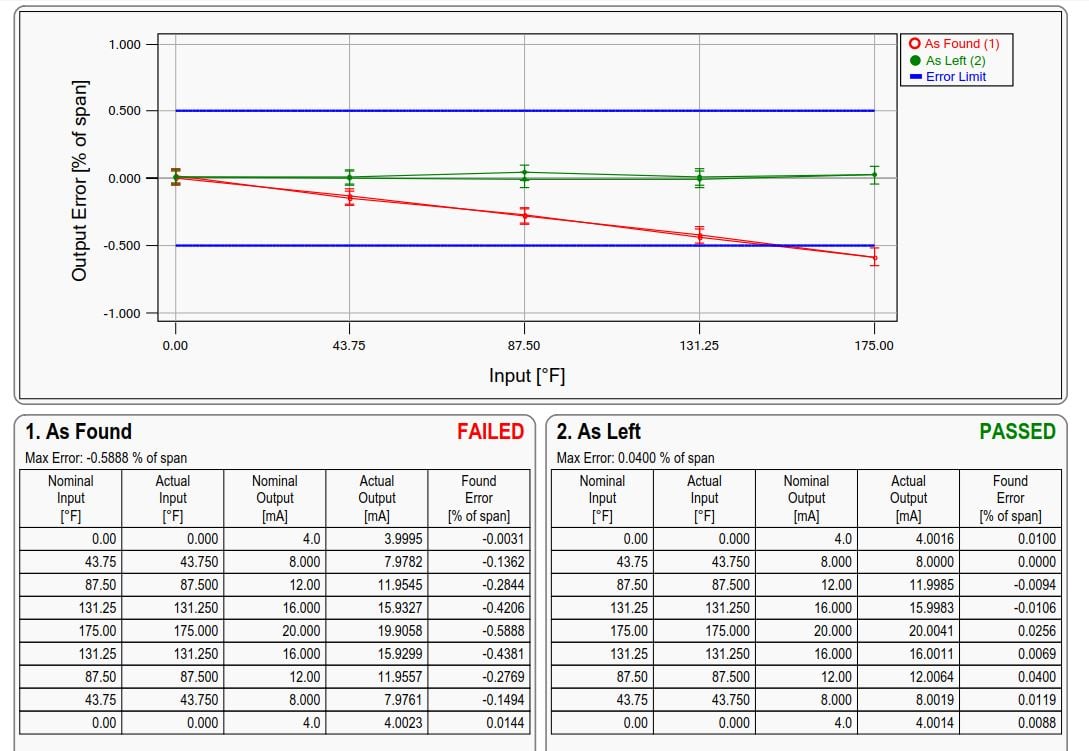
(Example calibration certificate above)
With software-based calibration management, planning and decision-making are improved. Procedures and calibration strategies can be planned and all calibration assets managed by the software. Instrument and calibrator databases are maintained, while automatic alerts for scheduled calibrations can be set up.
Organization also improves. The system no longer requires pens and paper. Calibration instructions are created using the software to guide engineers through the calibration process. These instructions can also be downloaded to a technician’s handheld documenting calibrator while he is in the field.
Execution is more efficient and errors are eliminated. Using software-based calibration management systems in conjunction with documenting calibrators means that calibration results can be stored in the calibrator’s memory, then automatically uploaded back to the calibration software. There is no re-keying of calibration results from a notebook to a database or spreadsheet. Human error is minimized and engineers are freed up to perform more strategic analysis or other important activities.
Documentation is easier. The software generates reports automatically and all calibration data is stored in one database rather than multiple disparate systems. Calibration certificates, reports and labels can all be printed out on paper or sent in electronic format.
Analysis becomes easier too, enabling engineers to optimize calibration intervals using the software’s trending function. Also, when a plant is being audited, calibration software can facilitate both the preparation and the audit itself. Locating records and verifying that the system works is effortless when compared to traditional calibration record keeping. Regulatory organisations and standards such as FDA and EPA place demanding requirements on the recording of calibration data. Calibration software has many functions that help in meeting these requirements, such as Change Management, Audit Trail and Electronic Signature functions.
Business Benefits
For the business, implementing software-based calibration management means overall costs will be reduced. These savings come from fully digitized calibration procedures, now paperless with no manual documentation. Engineers can analyze calibration results to see whether the calibration intervals on plant instruments can be optimized. For example, those instruments that perform better than expected may well justify a reduction in their calibration frequency.
Plant efficiencies should also improve, as the entire calibration process is now streamlined and automated. Manual procedures are replaced with automated, validated processes, which is particularly beneficial if the company is automating a lot of labour-intensive calibration activities. Costly production downtime will also be reduced.
Even if a plant has already implemented a maintenance management software, calibration management software can be easily integrated to this system. If the plant instruments are already defined on a database, the calibration management software can utilize the records available in the system database.
The integration will save time, reduce costs and increase productivity by preventing unnecessary double effort and rekeying of work orders in multiple systems. Integration also enables the plant to extend automated data acquisition to their ERP system with smart calibrators, which simply is not possible with a standalone system.
Beamex Solutions
 Beamex’s suite of calibration management software can benefit all sizes of process plant. For relatively small plants, where calibration data is needed for only one location, only a few instruments require calibrating and where regulatory compliance is minimal, Beamex LOGiCAL calibration software maybe the most appropriate.
Beamex’s suite of calibration management software can benefit all sizes of process plant. For relatively small plants, where calibration data is needed for only one location, only a few instruments require calibrating and where regulatory compliance is minimal, Beamex LOGiCAL calibration software maybe the most appropriate.
Companies that have medium to large amount of instruments and calibration work or strict regulatory compliance, Beamex CMX Professional is ideal. It fulfills the requirements of 21 CFR Part 11 and other relevant regulations for electronic records, electronic signatures and data integrity. It also offers Mobile Security Plus, which provides enhanced functionality with compatible offline mobile devices, such as Beamex MC6 family of documenting calibrators and tablets/smartphones with the Beamex bMobile application. This enhancement further lowers the risk of ALCOA violations by identifying those using offline mobile devices by their electronic signature and by protecting the offline data against tampering.
 Along with CMX, the Beamex bMobile application allows for paperless execution and documentation of inspection activities in the field. It works offline as well, which is ideal where reliable network connections are not available. bMobile also supports Beamex’s “Mobile Security Plus” technology, a solution to ensure the integrity of calibration data throughout the entire process.
Along with CMX, the Beamex bMobile application allows for paperless execution and documentation of inspection activities in the field. It works offline as well, which is ideal where reliable network connections are not available. bMobile also supports Beamex’s “Mobile Security Plus” technology, a solution to ensure the integrity of calibration data throughout the entire process.
Beamex’s multi-site solution, CMX Enterprise, is suitable for process manufacturers with multiple or global sites, multilingual users and a very large amount of instruments that require calibration. Here, a central calibration management database is often implemented, which is used by multiple plants across the world.
Please see also our Calibration Software main page.
Summary
Every type of process plant, regardless of industry sector, can benefit from using calibration management software. Compared to traditional, paper-based systems, in house built legacy calibration systems or calibration modules of maintenance management systems, using dedicated calibration management software results in improved quality, increased productivity and reduced costs of the entire calibration process.
Calibration Software key benefits:
- Better Planning & Decision-Making
- Easier organization
- Faster Execution
- Automated Documentation
- Analysis capabilities
- Cost reduction
- Quality improvements
- Increase in efficiency
A Buyer's Guide to Calibration Management Software
If you’re evaluating calibration management software, our Buyer’s Guide to Calibration Management Software is a must-read. It will give you a clear roadmap to making an informed decision that aligns with your business goals.
Download the Buyer's Guide by clicking the image below:


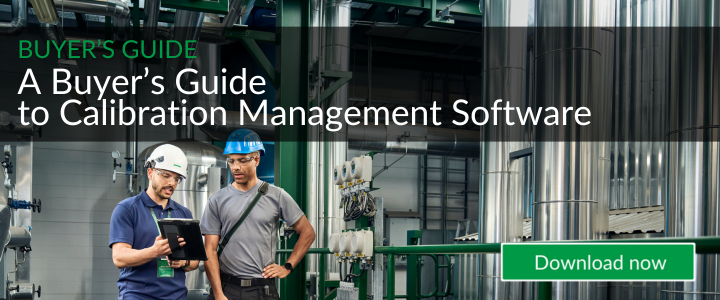

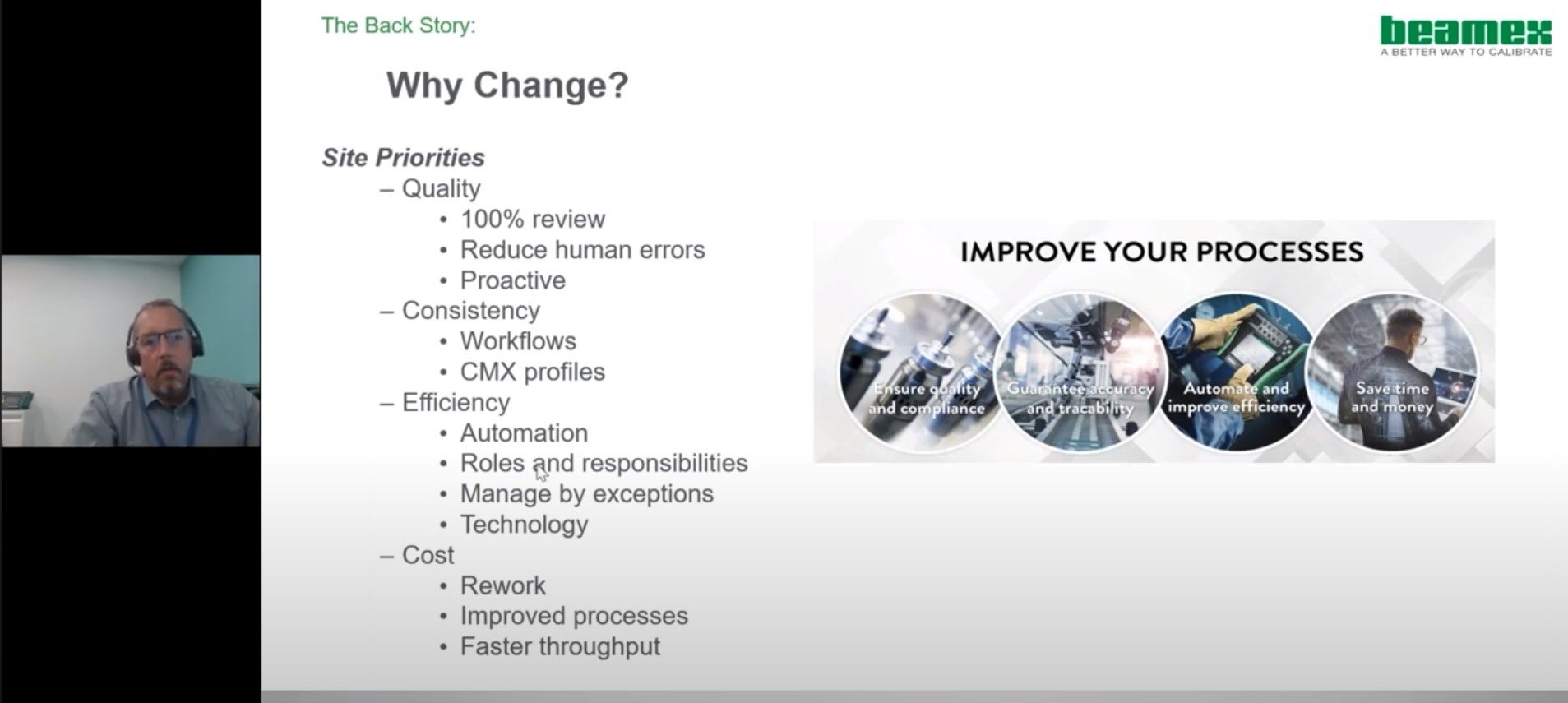

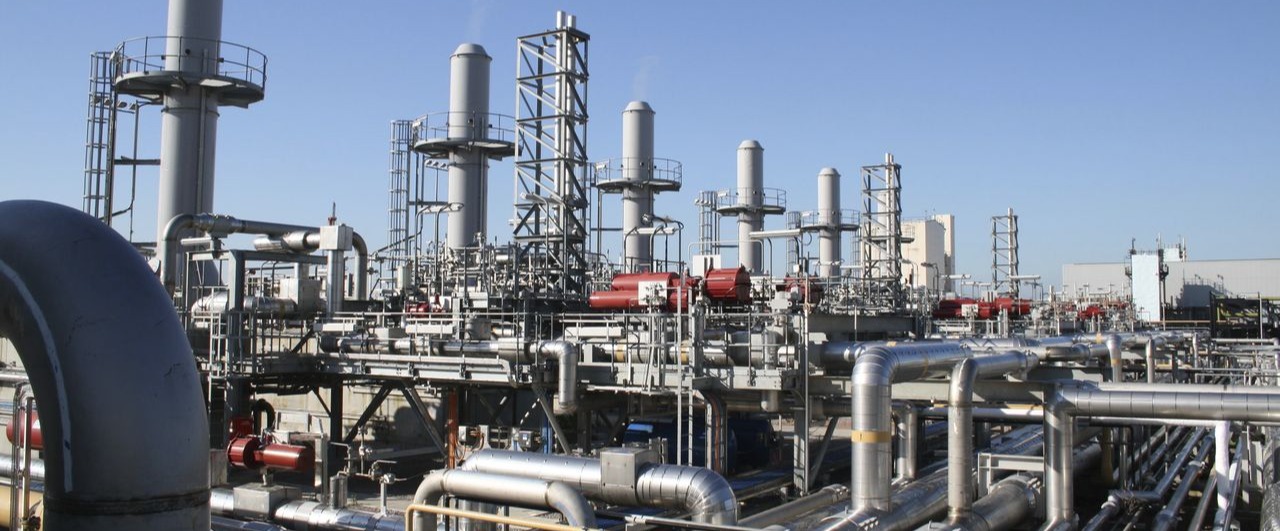

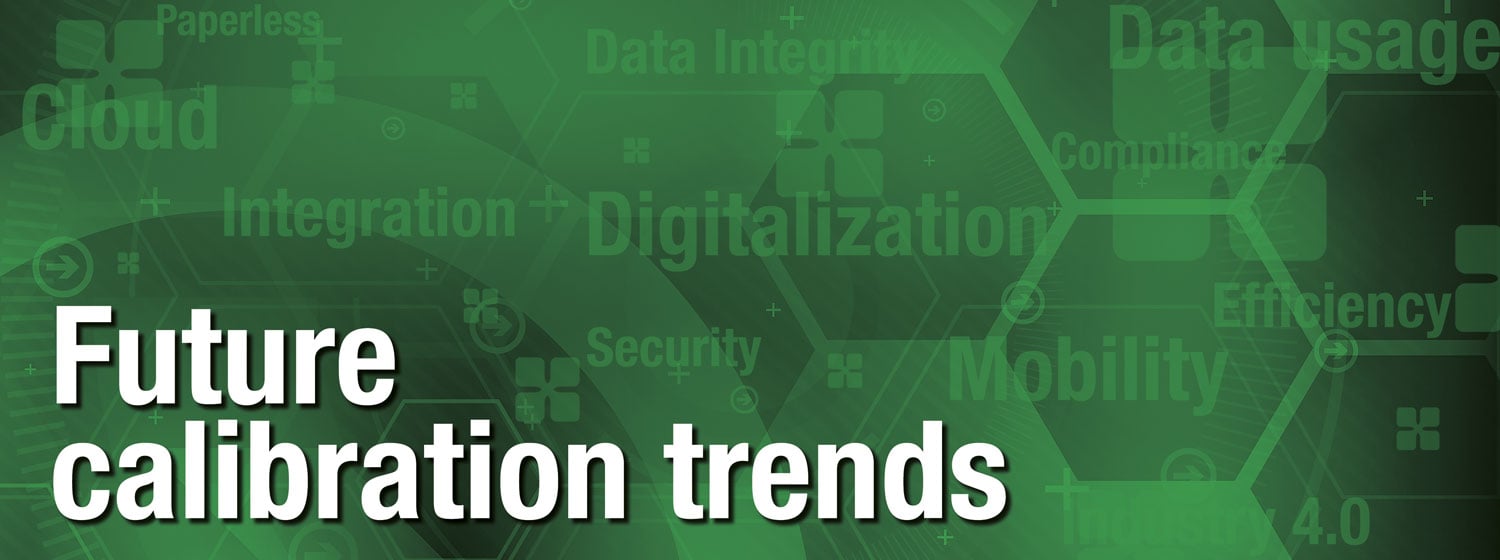

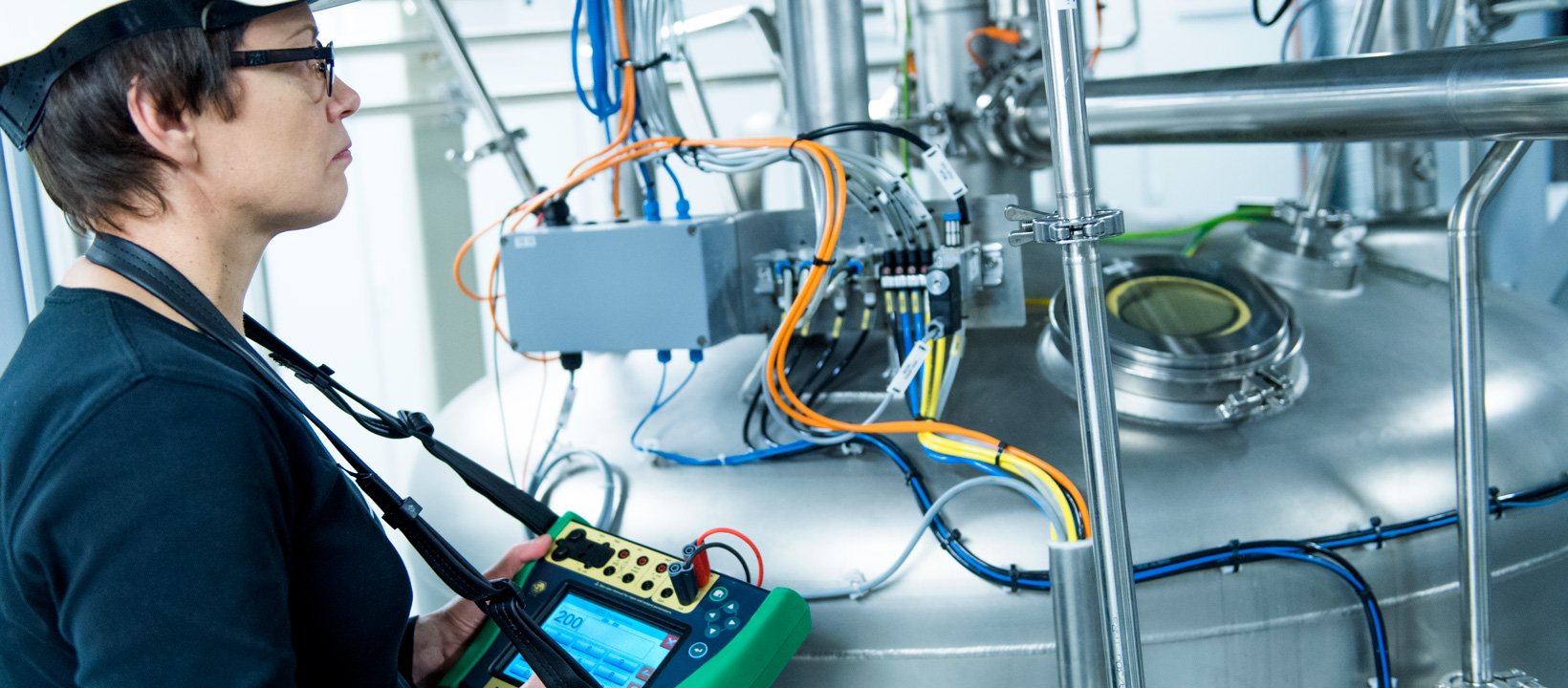
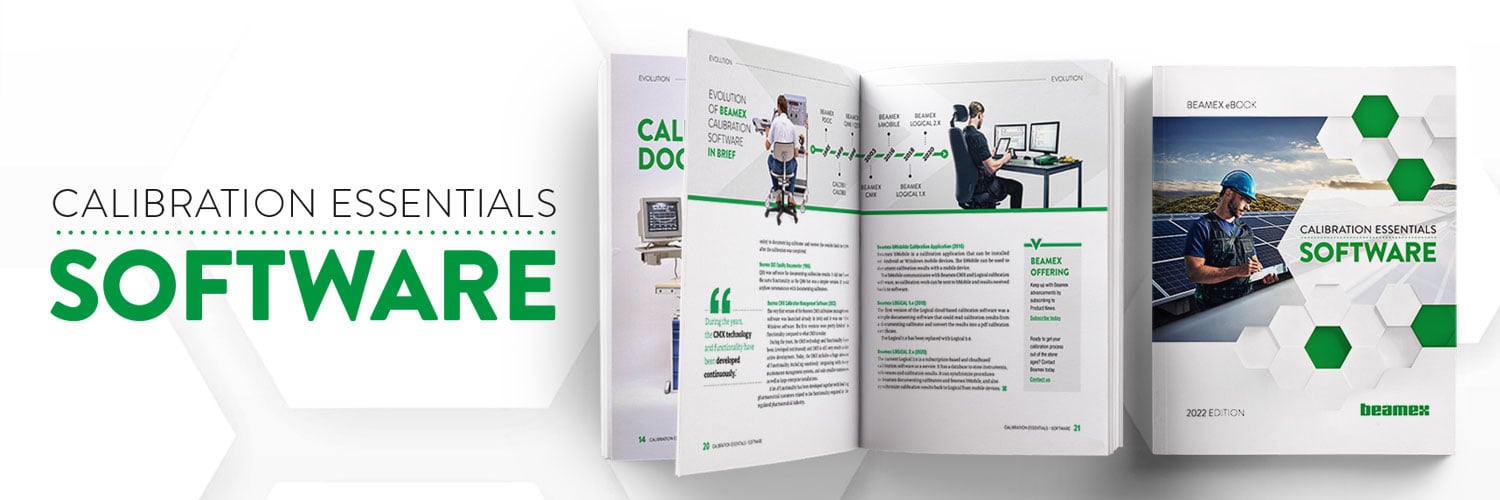









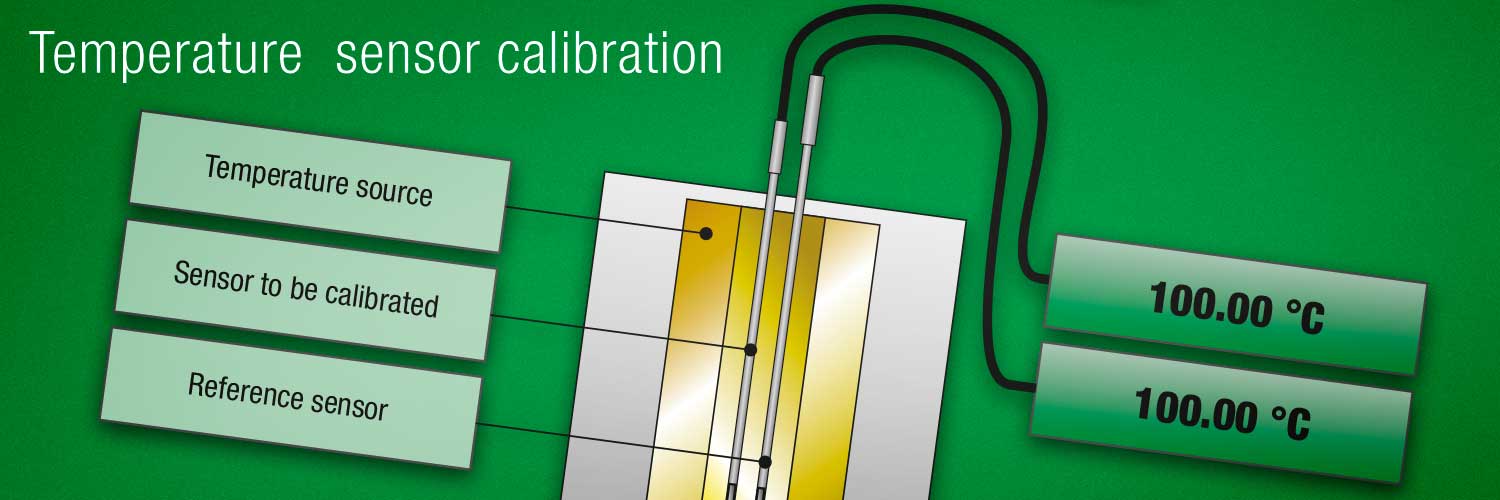


.jpg)






.png)
.png)
Discussion